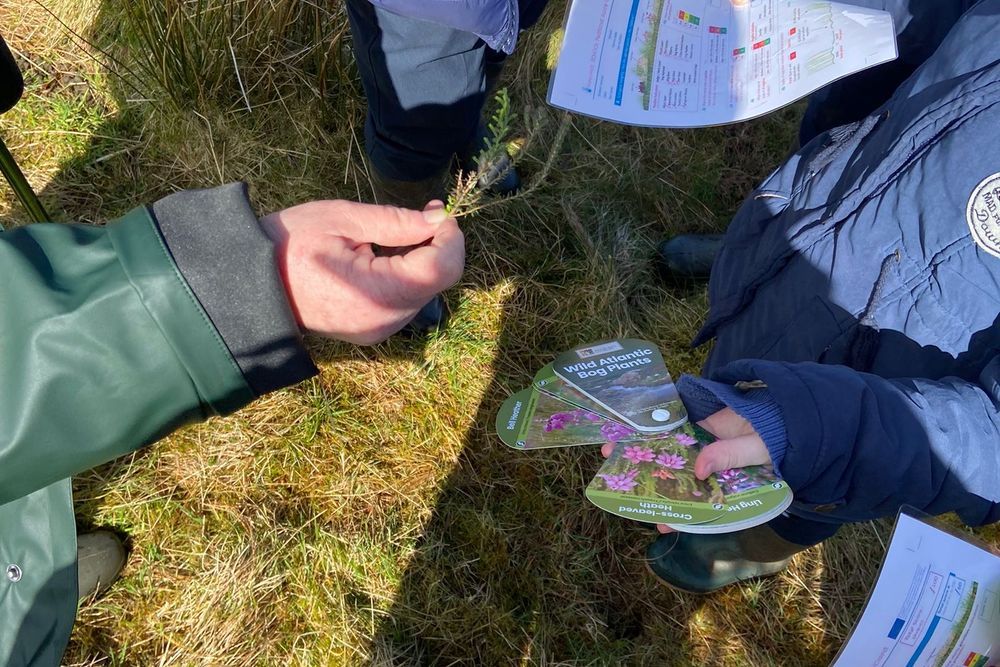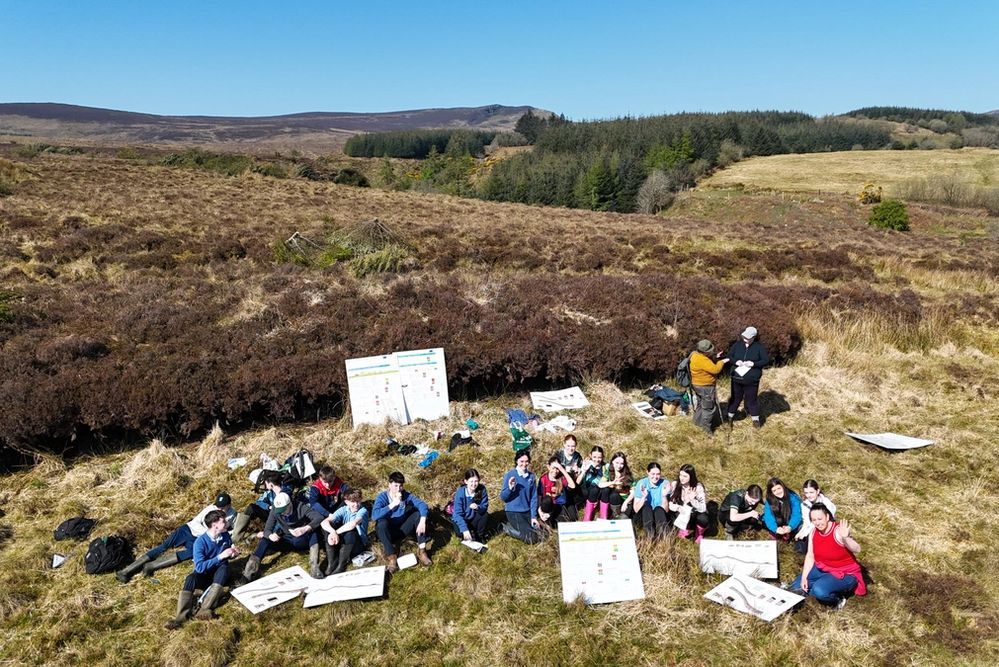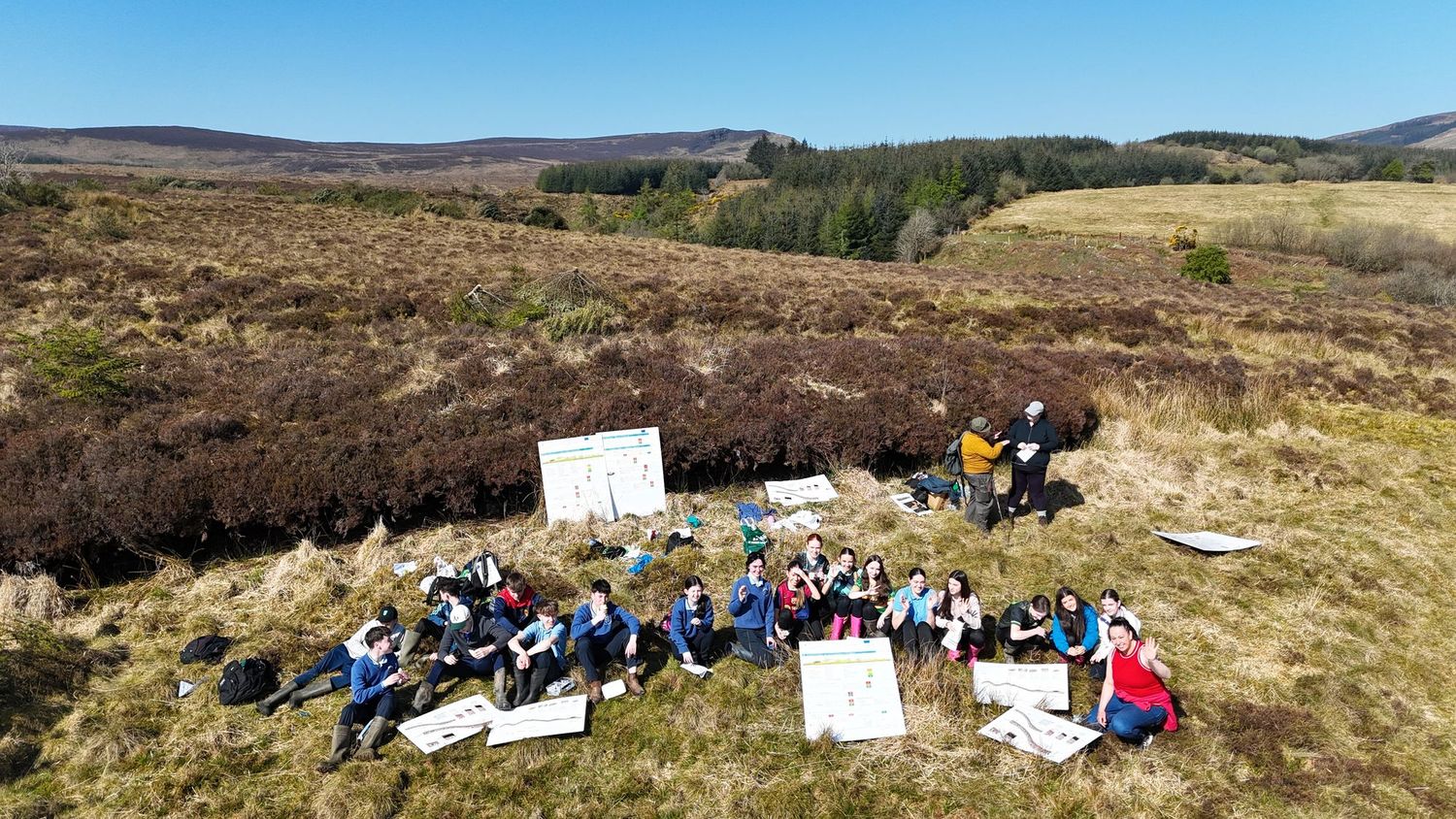The WaterLANDS Irish Action Site, coordinated by LIFE IP Wild Atlantic Nature in conjunction with National Parks and Wildlife Service, has set up a School Programme as part of their restoration work, whereby students are given the opportunity to explore the importance of peatlands for biodiversity, water and climate change in the field. Dr Guaduneth Chico, the WaterLANDS Irish Action Site Coordinator, provides insights into the purpose and importance of the School Programme.
The Cuilcagh-Anierin Uplands Special Area of Conservation (SAC) is a blanket bog site covering 9,735 hectares. Erosion, drainage and invasive conifer encroachment are just some of the threats faced by this Action Site. In Ireland, peatlands have always been seen as a fuel resource or wasteland, but the reality is that our bogs help us to retain water in our hills and also to mitigate and battle climate change. Understanding the value of peatlands is a critical part of raising awareness and explaining why we are protecting and restoring them.
The school programme led by the Irish Action Site is part of an ongoing training and engagement strategy, which allows students to see this habitat from another point of view, exploring its importance for biodiversity, water and climate change first-hand in the field.
The programme has been adapted to all levels, covering students from primary to secondary schools between the ages of 9 to 16 years. It covers a large range of topics, from bog formation to the plants and animals that live in the bog. In the field visit, students learn to identify different plant species and the pressures on peatlands. The visits also promote and highlight the use of scorecards, which offer a way to assess peatlands and the quality of the habitats in terms of specific indicators, including biodiversity (plant species), water management, vegetation structure, exposed soil and damaging activities. The better the quality of the habitat, the higher the score awarded in each section and therefore, better is the payment for the landowner.
The LIFE IP Wild Atlantic Nature project has set up a results-based payment scheme (RBPS) linked to these scorecards, whereby farmers receive funding in exchange for improving habitat quality and biodiversity. Habitats receive a final score on a scale of 0 (low) to 10 (high) and the level of payments is linked with this score.

Students from Drumshanbo Primary School evaluating their scorecards
The school programme is split into two sessions. The first session explains what a bog is, the value of this habitat and the incredible things you can find in bogs. The session ends with a workshop, where students assess a farm scenario and have to find the key positive and negative indicators.
The second gathering, which takes place a few weeks later, is linked to a field visit where students have the opportunity to identify plants and pressures first-hand in the field in small groups in a bog restored under WaterLANDs.
WaterLANDS Irish Action Site Coordinator Dr Guaduneth Chico explains: “It is very fun to spend a day in the field with the kids, seeing their interest and watching how they gain knowledge on peatlands. Our schools also appreciate the opportunity to go to the field locally as a means to support their school activities. We are creating a real impact in the local communities with our School Programme.”

Field trip with students from Ballinamore Community School
The success of this school programme is already becoming visible. As part of the programme, a questionnaire is carried out with the students to see if and how their perception of peatlands changes. The questionnaire is carried out before and after each interaction with the school classes in collaboration with WP1. Numbers so far have shown that before the first visit, 80% of students related peatlands to turf cutting and gave it negative attributes such as “dirty”. After the first session, 20% of the students changed their relation to peatlands from turf cutting to “mosses” and “water”. After the second session (field trip exercise), over 60% of the students who had previously related peatlands to turf cutting, chose “mosses” or “water” afterwards and even chose some positive attributes such as “enjoyable”. These results indicate the great success of the school programme, but also of the field trip specifically.
The school programme is a great way to engage the wider local community around Cuilcagh Anierin Uplands SAC in the restoration works undertaken with the landowners as part of the results-based payment scheme (RBPS). It impacts not only wider families, but also future generations and initiates conversations about the WaterLANDS project through materials that kids bring home to share with their parents.
Text by Guaduneth Chico, WaterLANDS Irish Action Site Coordinator (LIFE IP Wild Atlantic Nature/National Parks and Wildlife Services)
